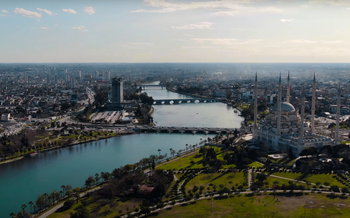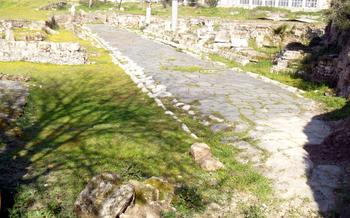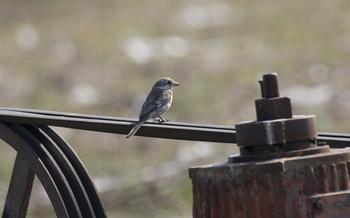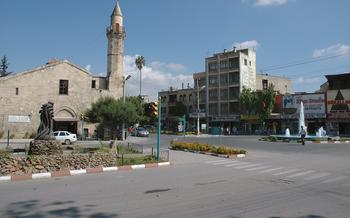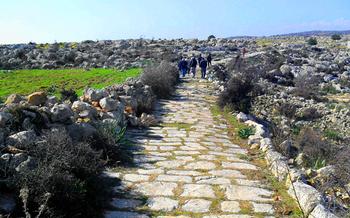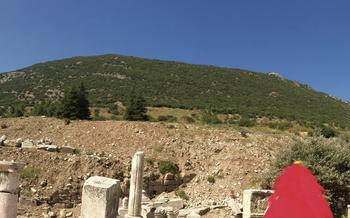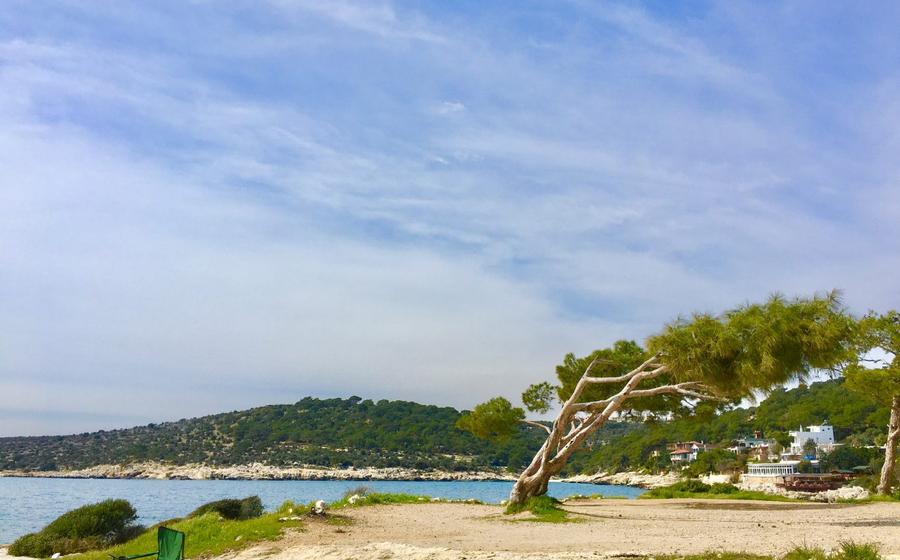
Tarsus Animal Park
- Historical Background
- Getting There
- Park Highlights
- Family-Friendly Activities
- Educational Value
- Conservation Efforts
- Accessibility and Facilities
- Planning Your Visit
- Local Cuisine and Dining Options:
- Nearby Attractions:
- Photography Tips
- Safety Precautions:
- Ethical Considerations:
Historical Background
Tarsus, a city steeped in history and religious significance, played a crucial role in the development of early Christianity. As the birthplace of the Apostle Paul, Tarsus holds a special place in the hearts of Christian pilgrims. Its strategic location at the crossroads of major trade routes made it a thriving commercial center in ancient times, attracting merchants and travelers from across the globe. Tarsus was also home to a diverse population, which contributed to its rich cultural heritage and unique identity. Explore the ancient ruins, marvel at the architectural wonders, and immerse yourself in the captivating stories that unfold within this historic city.
Getting There
Reaching Tarsus Animal Park is a breeze, with multiple transportation options available. Whether you prefer the convenience of public transport, the flexibility of driving, or the comfort of a guided tour, there's a hassle-free way to get there.
For those relying on public transportation, hop on a bus from Mersin Otogar (bus station) to Tarsus. The journey takes approximately 45 minutes, and the bus stop is a short walk from the park's entrance. Alternatively, you can take a train from Adana to Tarsus, which takes about an hour and 15 minutes. From the train station, it's a 10-minute taxi ride to the park.
If you prefer the freedom of driving, follow the D400 highway from Mersin or Adana towards Tarsus. The park is conveniently located just off the highway, making it easy to find. Ample parking is available on-site, so you can leave your car safely while you explore the park.
For those seeking a hassle-free experience, guided tours to Tarsus Animal Park are available from various tour operators in Mersin and Adana. These tours typically include transportation to and from the park, as well as a knowledgeable guide who can provide insights into the animals and their habitats.
During my visit, I opted for the scenic train journey from Adana. The countryside views were breathtaking, and the chance to relax and enjoy the ride added to the excitement of the trip. Once in Tarsus, I took a taxi to the park, which was just a short and pleasant ride away.
Park Highlights
Tarsus Animal Park invites visitors to immerse themselves in the captivating world of wildlife. Stroll through the park's meticulously designed habitats, each meticulously crafted to mirror the natural ecosystems of its inhabitants. Encounter majestic lions basking in the sun, graceful gazelles bounding effortlessly across the plains, and playful monkeys swinging from tree to tree. Observe the elegant flamingos wading in the tranquil waters of their lagoon, their vibrant feathers shimmering under the sunlight.
The park's commitment to conservation and education shines through in its interactive exhibits and educational programs. Learn about the fascinating behaviors of different animal species, their unique adaptations, and the importance of preserving their habitats. Witness the thrill of feeding sessions, where you can see the animals up close as they eagerly devour their meals. Don't miss the opportunity to engage in educational talks and guided tours, where knowledgeable park staff will share their insights and expertise, leaving you with a deeper understanding of the animal kingdom.
Family-Friendly Activities
As a family-oriented destination, Tarsus Animal Park offers an array of activities and attractions designed to entertain and educate children of all ages. The park features dedicated playgrounds where kids can unleash their energy and engage in imaginative play. For a more hands-on experience, the petting zoo allows children to interact with friendly farm animals, fostering a sense of connection with nature. Interactive learning exhibits, such as touch tanks and educational displays, provide opportunities for children to learn about animal behavior, habitats, and conservation efforts in a fun and engaging way. The park also hosts special events and programs tailored to families, such as animal-themed workshops, storytelling sessions, and interactive shows, creating memorable experiences for both parents and children.
Educational Value
Tarsus Animal Park serves as a valuable educational resource for visitors of all ages, particularly for children and students. The park features a variety of interactive displays and exhibits that provide detailed information about animal behavior, conservation efforts, and the importance of wildlife preservation. Visitors can learn about the unique characteristics and adaptations of different animal species, as well as their role in the delicate balance of ecosystems.
Guided tours and educational programs are also available, offering even deeper insights into the animal kingdom. These programs are led by experienced educators who share their knowledge and passion for wildlife with visitors. Participants can ask questions, learn about the park's conservation initiatives, and gain a better understanding of the importance of protecting our planet's biodiversity.
During my visit to the park, I had the opportunity to participate in a guided tour that focused on the park's efforts to protect endangered species. I learned about the challenges faced by these animals in the wild and the measures that the park is taking to ensure their survival. It was truly inspiring to see how dedicated the staff is to preserving our planet's wildlife heritage.
Conservation Efforts
Tarsus Animal Park takes pride in its active involvement in conservation initiatives, contributing to the preservation of biodiversity and the protection of threatened animal populations. The park participates in various breeding programs for endangered species, providing a safe and controlled environment for these animals to thrive and reproduce. Through these efforts, the park aims to increase the genetic diversity of captive populations and contribute to the conservation of species facing extinction in the wild.
One of the park's notable achievements is its successful breeding program for the critically endangered Anatolian leopard. This majestic big cat is native to Turkey and faces numerous threats in its natural habitat, including habitat loss, poaching, and human-wildlife conflict. The park's breeding program provides a safe haven for these leopards, allowing them to reproduce and contribute to the recovery of their species.
In addition to breeding programs, Tarsus Animal Park also conducts research projects focused on animal behavior, conservation genetics, and habitat restoration. These studies contribute to a better understanding of the species housed in the park and provide valuable insights for conservation efforts both within the park and in the wild. The park collaborates with other institutions, universities, and conservation organizations to share knowledge and expertise, promoting a collaborative approach to wildlife conservation.
Visitors to the park have the opportunity to learn about these conservation initiatives and witness firsthand the efforts being made to protect endangered species. Through educational displays, interactive exhibits, and guided tours, the park raises awareness about the importance of conservation and inspires visitors to become advocates for wildlife protection.
Accessibility and Facilities
Tarsus Animal Park is designed to be accessible and welcoming to visitors of all abilities. Wheelchair ramps and designated parking spaces ensure that visitors with mobility challenges can easily navigate the park's grounds. Accessible restrooms are also available for convenience.
Within the park, visitors will find a range of facilities to enhance their experience. Restaurants and cafes offer a variety of dining options, from quick snacks to sit-down meals. A gift shop provides souvenirs and mementos to commemorate your visit. Picnic areas are available for those who prefer to bring their own food and drinks.
Additional amenities include lockers for storing personal belongings, stroller rentals for families with young children, and guided tours in multiple languages for a deeper understanding of the park's animals and conservation efforts.
My personal experience at the park highlighted the convenience and helpfulness of the facilities. The stroller rental allowed my family to navigate the park with ease, and the guided tour provided fascinating insights into the lives of the animals and the park's conservation initiatives.
Planning Your Visit
Timing is crucial for a successful visit to Tarsus Animal Park. The best time to visit is during the shoulder seasons (spring and autumn), when the weather is pleasant and the crowds are smaller. Summer months can be hot and crowded, while winter temperatures can drop significantly.
Plan to spend at least half a day at the park to fully experience all it has to offer. However, if you have limited time, focus on the animal exhibits that interest you most. Create a personalized itinerary based on your interests and the time available.
To avoid crowds and long lines, arrive at the park early in the morning or late in the afternoon. Consider packing a picnic lunch or purchasing food from the park's restaurants to save time and money.
Remember to wear comfortable shoes, as you'll be doing a lot of walking. Also, bring sunscreen, hats, and sunglasses to protect yourself from the sun. If you're visiting during the cooler months, pack layers of clothing to adjust to changing temperatures.
Local Cuisine and Dining Options:
When visiting Tarsus Animal Park, don't miss the opportunity to savor the delicious local cuisine. Tarsus is renowned for its unique culinary delights, showcasing a blend of Turkish and Mediterranean flavors. For a truly authentic experience, try the mouthwatering "Tarsus Kebap," a succulent skewer of grilled meat served with fresh vegetables and aromatic spices. Another must-try dish is "Şırdan," a specialty made from lamb or goat intestines, stuffed with rice, herbs, and spices, and cooked to perfection.
If you prefer a lighter meal, indulge in the delicious "Mezze," a selection of small plates featuring various dips, salads, and appetizers. Don't forget to try the refreshing "Şalgam," a fermented turnip juice that is a local favorite.
For a convenient and affordable dining option, pack your own picnic and enjoy it in one of the designated picnic areas within the park or nearby. This allows you to savor your meal surrounded by nature, creating a memorable experience.
Nearby Attractions:
Tarsus is a treasure trove of historical and natural wonders, with several attractions waiting to be explored. A short drive from the animal park, visitors can delve into the ancient ruins of the city of Tarsus. The city boasts a rich history that dates back to the Roman era, and its well-preserved ruins offer a glimpse into the grandeur of bygone times. Don't miss the opportunity to explore the ancient city walls, amphitheater, and other impressive remnants of the past.
For a unique cultural experience, head to the Tarsus Grand Mosque, a magnificent architectural masterpiece that showcases the city's Islamic heritage. Its intricate tilework, soaring minarets, and serene interiors create a sense of awe and tranquility. Take a guided tour to learn about the mosque's history and significance, and soak in the peaceful atmosphere.
Nature enthusiasts will delight in exploring the nearby Tarsus Waterfall, a breathtaking natural wonder located just a few kilometers from the city center. Immerse yourself in the tranquility of the cascading waters and lush greenery, and capture stunning photographs of this hidden gem. Combine your visit to Tarsus Animal Park with these nearby attractions to create a well-rounded and unforgettable travel experience.
Photography Tips
Capturing stunning photographs of the animals at Tarsus Animal Park requires careful consideration of lighting conditions, angles, and ethical considerations. For the best results, visit during the golden hours of sunrise or sunset when the light is softer and more flattering. Position yourself at eye level with the animals whenever possible to create a more immersive and engaging image.
Respecting animal welfare is paramount. Always maintain a safe distance and avoid using flash photography, as this can disturb or startle the animals. Use a telephoto lens to bring distant subjects closer, allowing you to capture detailed shots without encroaching on their space.
Experiment with different camera settings and techniques to enhance your wildlife photography. A fast shutter speed will freeze motion, while a slower shutter speed can create a sense of movement and drama. Use a low ISO to minimize noise and grain, especially in low-light conditions.
Remember, patience is key. Take your time observing the animals and waiting for the perfect moment to capture their natural behaviors. Your efforts will be rewarded with stunning photographs that will serve as lasting memories of your visit to Tarsus Animal Park.
Safety Precautions:
Ensuring your safety and the well-being of the animals is paramount at Tarsus Animal Park. Abide by the park's regulations, maintaining a safe distance from the animals and refraining from feeding or touching them. Follow designated pathways and be mindful of your surroundings. Familiarize yourself with emergency procedures and first aid facilities in case of any unforeseen circumstances. By adhering to these safety measures, you contribute to a harmonious and enjoyable experience for all visitors and the animals they come to see.
Ethical Considerations:
Tarsus Animal Park prioritizes ethical animal treatment and conservation practices, ensuring the well-being of its inhabitants. The park adheres to strict guidelines that promote responsible breeding programs, prioritize animal welfare, and actively engage in conservation efforts. Visitors are encouraged to be respectful and responsible when interacting with the animals and their habitats, fostering a harmonious coexistence between humans and wildlife. By observing ethical practices and witnessing the positive impact of conservation efforts firsthand, visitors gain a deeper understanding of the importance of protecting and preserving our natural heritage.
